The One Belt One Road (OBOR) initiative of the Chinese has seen a number of international conferences hosted in China over the last two years, to debate and seek ideas from the global economic/strategic community on the optimum parameters and pre-requisites for the project. The first ever “Silk Road Think Tanks Network” (logo acronym “SiLKS”) was convened at Madrid on 28-29 Oct 2015. The forum comprised of Think Tanks invited from across the world by the Development Research Centre (DRC), China, and the the Center for International Relations and Sustainable Development (CIRSD) – an international NGO headquartered in Serbia.
The Opening Ceremony of the forum saw a galaxy of leaders from China, Spain, Serbia, and Croatia. The host/moderator for this ceremony was Mr Miguel Angel Moratinos, former Foreign Minister of Spain and currently Honorary Chairman of the CIRSD’s Board of Directors. While delivering the Welcome Address, he spoke in glowing terms, of the greatness of the Chinese idea (OBOR), and of Spain’s support for the initiative. As is the norm in all Chinese conferences, the line-up for opening remarks included a number of luminaries from across the world, as follows:-
- Mr Vuk Jeremic, President of CIRSD, Former Foreign Minister of Serbia, and President of the 67th session of the UN General Assembly
- Mr Stijepan Mesic, Former President of Croatia
- Ms Izumi Nakamitsu, Asst Secretary General, United Nations Development Program (UNDP)
- Jaime Garcia-Legaz, Secretary of State for Trade, Ministry of Economy and Competition, Spain
The Keynote Address was delivered by Mr Li Wei, President of the DRC, China.
All the speakers spoke in high praise of the greatness of the Chinese idea, and of the surety of benefit to all enroute countries. The two Spanish speakers (the host, as well as the Secy. of State for Trade), also expressed warm appreciation for the initiative, and gave examples of the Spanish economy’s increasing connect with the Chinese economy and of high expectations of Spanish participation in infrastructure ventures in the enroute countries.
After the Opening Ceremony, a “Launching Ceremony” (sic) was held which included a short video projecting the logos of all the 30 inaugural member Think Tanks, followed by the unfurling of the “SiLKS” scroll – a traditional Chinese ritual. From India, logos of VIF and RIS were projected in the video.

This was followed by three Panel Discussions on the subjects of “Facilities Connectivity”, “Trade and Investment”, and “Post Development Agenda”. These were moderated by well-known international personalities, and had many an international who’s who from the Banking/Financial/Management. Examples included the MD of UNIDO’s Program Development Division, MD of the European Bank for Reconstruction and Development (EBRD)’s Country and Sector Economics, Group CEO of HSBC Holdings, President of the Silk Road Fund, World Bank’s Country Director for China, Korea, and Mongolia, DG International Cooperation at the NDRC, China, Director of Mongolia’s Strategic Studies Institute, DG (Secy) of China’s International Economic Cooperation Division, and Pakistan’s Chairman of the Parliamentary Committee on CPEC (and former Information Minister).
Barring an odd panelist, the enthusiasm in the silk-road initiative seemed infectious (including in the case of most from Western Europe). What this conference achieved for the Chinese was something unique in that even a UN organisation had co-sponsored and recognized the value and positive impact of the initiative. UNDP’s logo was included in the co-sponsors’ list.
Think Tanks’ Roundtable Discussion. Since the main purpose of the forum was to ‘network’ Think Tanks across the routes, a roundtable discussion was conducted with representatives of all think tanks present, to discuss their role as providers of ideas to implement the project. Most members suggested that the frequency of Think Tanks’ forum should be atleast once a year, and funding for their visit/meeting should be provided by the organisers. Other recommendations included drawing upon Think Tanks’ potential to make assessments on the needs of the project, requirements of infrastructure in (their own) countries, and pros and cons of selecting various routes.
The Valedictory Address was delivered by the Foreign Minister of Spain, Mr Jose Manuel Garcia-Margallo. He spoke at length of the warm relations between Spain and China, growing trade relations, Spain’s promising recovery of its economy, and prospects of joint ventures along the silk route. He paid special tributes to the novel idea of OBOR, and expressed confidence on benefit to all countries along the silk route.
Conclusion. In sum, the “SiLKS” forum can easily be rated as a successful conference because of the kind of enthusiasm and support from some Western countries and International organisations witnessed at the forum. As far as the finalised routes are concerned, it is forums like this one that China seems to be depending upon, to decide on its ultimate lines. Basically, the entire project is about establishing multiple lines of communication along the land axis. This will entail take off/ joining spurs wherever a sea port exists in the vicinity, as also arteries to proximal cities along the main route. With support from multinational banks, and international organisations as seen in this forum, China is certain to get sufficient heft to uptick this project and perhaps even extend it beyond Western Europe. However, despite the billions in the Silk Road Fund and in the Asian Infrastructure Investment Bank (AIIB), the route will take quite some time to get operationalised, due to the wide disparity in development standards, and infrastructure availability enroute. This is because only few countries along the envisaged route have such infrastructure that will enable efficiencies in transit and discharge of goods. Unless port, rail, road, and depot infrastructure is at near parity along the entire route, the project will find hurdles and loss of intended effect.
In so far as the Maritime Silk Road is concerned, it must be appreciated that in today’s day and age, one cannot draw lines along “intended” routes. In the days of the Kalinga Voyages or the Zheng He Treasure Voyages, ships went in a convoy for a specific purpose along an intended route. Today, no shipping company will accept routeing unless profitable business with sufficient cargoes are assured. So, the lines that are being circulated on the net, should convey no significance as in the case of land routes. Shipping companies decide routes depending on best offered profits and best economies of time and distance during a voyage. No lines can be drawn for sea routes – as on land. However, if the idea is to pin-point certain nodal ports on the maritime route, then irrespective of the cargo volumes in to or from such ports, shipping companies will prefer a port only if it is efficient in throughput terms. That requires efficient logistics, sufficient mechanization of loading, efficient evacuation, and freely available rail/road communication connected to ports. These once again require investment in infrastructure upgradation in many countries in Asia and Africa. That will mean huge expenditure in the Least Developed Countries (LDCs) as well as some upscale ones which may not have invested in maritime infrastructure so far.
All this means heavy investments (by China and the enroute countries), over a period of time that will vary with the level of development in each country. An important aspect that needs to be considered – particularly on the land route – concerns security along the route. This aspect will have to be taken in to account as security concerns can add to the cost of transit. Should any incident occur in any area, it will only lead to discouragement for future transit, apart from adding insurance rates and therefore ultimate cost of goods along the entire route.
Published Date: 15th November 2015
(Disclaimer: The views and opinions expressed in this article are those of the author and do not necessarily reflect the official policy or position of the Vivekananda International Foundation)

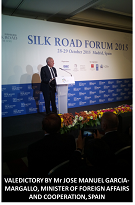
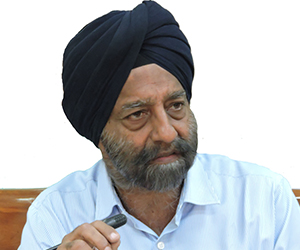
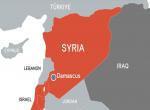
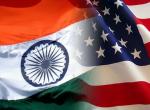


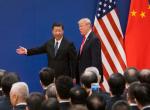
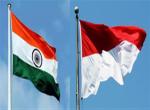

Post new comment